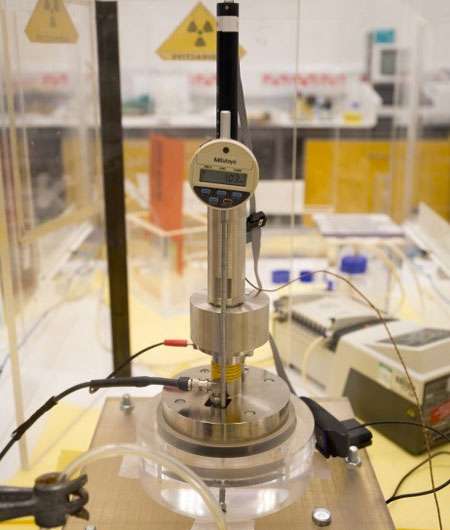World's first primary standard developed for molecular radiotherapy

Researchers at the National Physical Laboratory (NPL) have developed the world's first primary standard for molecular radiotherapy (MRT) to ensure its safe, effective use in the treatment of cancer.
The new standard will help improve the consistency of treatments with MRT, in which radioactive molecules, or radiopharmaceuticals, are injected directly into a patient's body to target and kill cancerous cells. Such standardisation is vital to encouraging more widespread use of MRT and the development of new and improved radiopharmaceuticals.
Like any form of radiotherapy, the success of MRT relies on the delivery of an extremely precise dose of radiation – the goal is to maximise the dose delivered to the tumour, while minimising damage to surrounding healthy tissue. However, in contrast to other forms of radiotherapy, dosimetry for MRT is not well established.
Patients are generally treated with the maximum activity known to be tolerated by healthy tissue, based on information from clinical trials. Treatment outcomes could be improved if the radiation dose received by patients undergoing MRT could be better measured and tailored to the individual. But until recently, not only were there no measurement methods, there was also no primary standard available to compare calculated doses to and ensure clinicians are administering consistent treatments.
To address this problem, researchers from NPL's Radiation Dosimetry and Radioactivity groups developed the new standard, the first of its kind in the world. Described in a publication in Metrologia, the standard consists of a gas-filled ionisation chamber containing two parallel electrodes, an adjustable distance apart, and enables the user to measure the absorbed radiation dose to water from a radioactive solution. The standard was validated using yttrium-90 chloride, a radionuclide used to treat liver cancer, and produced results well within the level of uncertainty required for MRT dose calculations.
Work on the new standard is programmed to continue for the next two years, with developments to further reduce the uncertainty and extension to other radionuclides used for MRT, such as iodine-131 and lutetium-177.
More information: I Billas et al. Development of a primary standard for absorbed dose from unsealed radionuclide solutions, Metrologia (2016). DOI: 10.1088/0026-1394/53/6/1259
Journal information: Metrologia
Provided by National Physical Laboratory



















